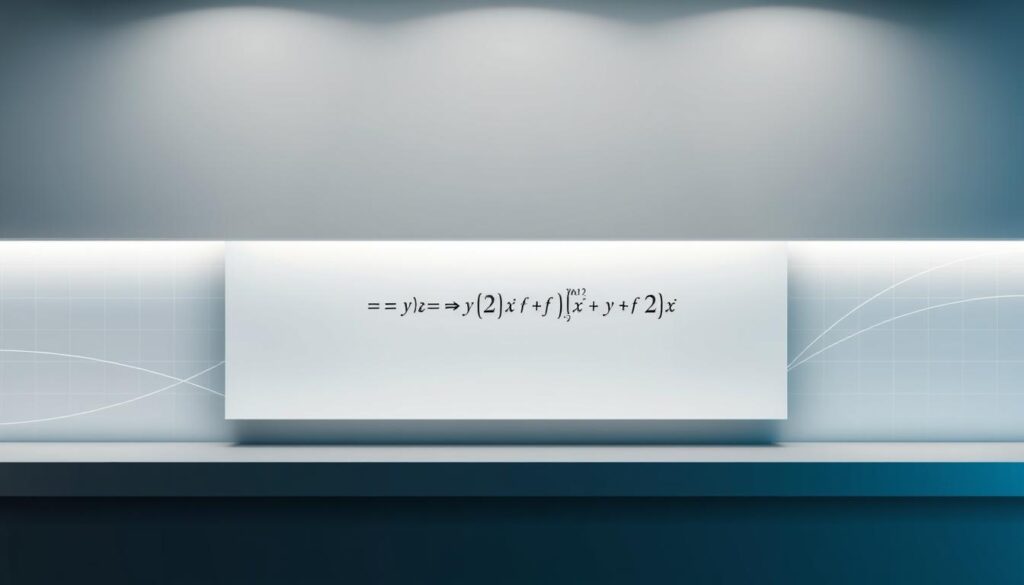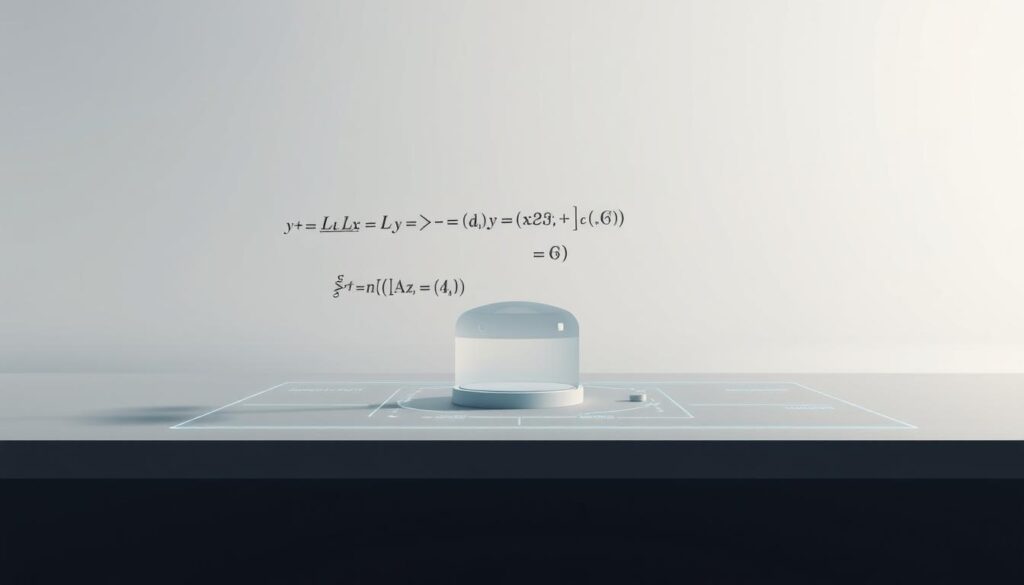Imagine having a personal math assistant that can solve complex equations with ease. Artificial Intelligence (AI) is making this a reality. With the ability to learn and adapt, AI can be trained to solve math problems, making it a valuable tool for students and professionals alike.
Building a simple AI that solves math equations is an exciting project that can be achieved with the right guidance. In this article, we will explore the process of creating an AI math solver, providing a step-by-step guide to get you started.
Key Takeaways
- Understand the basics of AI and its application in math problem-solving
- Learn how to create a simple AI model that can solve math equations
- Discover the tools and resources needed to build an AI math solver
- Get started with building your own AI math solver
- Explore the potential applications of AI in math and beyond
Understanding AI and Mathematical Problem-Solving
Building a simple AI to solve math equations is an exciting project that combines mathematical concepts with artificial intelligence techniques. To start, it’s essential to understand what makes an AI system capable of solving mathematical problems.
What Makes an AI “Intelligent” for Math Problems
An AI is considered “intelligent” for math problems when it can understand, interpret, and solve mathematical equations using algorithms and data structures. This involves processing mathematical expressions, identifying the operations required, and executing them to arrive at a solution.
Types of Math Equations AI Can Solve
AI can be designed to solve various types of math equations, ranging from simple arithmetic operations to complex algebraic expressions and calculus problems. For a beginner ai math project, starting with basic arithmetic and gradually moving to more complex equations is advisable.
How AI Approaches Math Differently Than Humans
Unlike humans, AI approaches math problems with a systematic and algorithmic mindset. AI systems can process information faster and more accurately, but they require precise input and programming. An ai programming tutorial can help you understand how to structure your AI to efficiently solve math problems.
In conclusion, understanding AI’s capabilities and limitations in mathematical problem-solving is crucial for developing an effective AI math solver. By leveraging the right algorithms and programming techniques, you can create a robust AI system that can tackle a variety of math equations.
Required Tools and Prerequisites
The journey to developing an AI math solver begins with identifying the right tools and prerequisites. To build a basic AI calculator, one needs to be familiar with the programming languages, libraries, and hardware that facilitate the development process.
Programming Languages Best Suited for AI Math Solvers
Python is the most commonly used language for developing AI math solvers due to its simplicity and the extensive libraries available. Other languages like R and Julia are also gaining popularity for specific mathematical computations.
Essential Libraries and Frameworks
For mathematical operations, libraries such as NumPy and SymPy are indispensable. For more advanced implementations involving machine learning, frameworks like TensorFlow or PyTorch are highly recommended.
NumPy and SymPy for Mathematical Operations
NumPy provides support for large, multi-dimensional arrays and matrices, along with a large collection of high-level mathematical functions. SymPy is used for symbolic mathematics, enabling the manipulation of mathematical expressions.
TensorFlow or PyTorch for Advanced Implementations
TensorFlow and PyTorch are powerful frameworks that support deep learning and complex neural networks, crucial for advanced AI math solvers.
Hardware Considerations for Development
A robust development environment requires a computer with sufficient RAM and processing power. For complex models, a dedicated GPU can significantly accelerate the development and training process.

Setting Up Your Development Environment
Before diving into coding your AI math solver, it’s essential to set up your development environment correctly. This step is crucial for a smooth development process and ensures that your simple artificial intelligence for math works as intended.
Installing Python and Necessary Packages
Start by installing Python, a language well-suited for AI development due to its simplicity and extensive libraries. You’ll need to install packages like NumPy for numerical operations and SymPy for symbolic mathematics. Use pip, Python’s package installer, to add these libraries to your environment.

Configuring Your IDE for AI Development
An Integrated Development Environment (IDE) like PyCharm or Visual Studio Code can significantly enhance your development experience. Configure your IDE to support AI development by installing relevant plugins and setting up code completion for your installed libraries.
Creating a Virtual Environment for Your Project
Creating a virtual environment for your project helps manage dependencies and avoid conflicts with other projects. Python’s venv module makes it easy to create isolated environments for your AI math solver.
Version Control Best Practices
Implementing version control using Git allows you to track changes and collaborate with others. Best practices include committing regularly, writing clear commit messages, and using branches for new features.
| Tool | Purpose | Benefits |
|---|---|---|
| Python | Programming Language | Simple, extensive libraries |
| NumPy, SymPy | Libraries for Numerical and Symbolic Math | Enhance mathematical capabilities |
| PyCharm, VS Code | IDEs for Development | Improved coding experience, debugging tools |
| Git | Version Control System | Change tracking, collaboration |
By following these steps, you’ll be well on your way to creating a step-by-step AI math solution guide. Proper setup is key to a successful project.
“The best way to predict the future is to invent it.” – Alan Kay
How to Build a Simple AI That Solves Math Equations: Core Design
The core design of an AI math solver involves choosing the right algorithms and structuring the input and output systems effectively. To create an AI math solver, one must consider several key factors that influence its ability to solve math equations accurately.
Choosing the Right AI Approach for Equation Solving
When it comes to solving math equations, AI can be approached in different ways. The choice between these approaches depends on the complexity of the equations and the desired level of accuracy.
Rule-Based Systems vs. Machine Learning Approaches
Rule-based systems rely on predefined rules to solve equations, making them suitable for straightforward mathematical operations. On the other hand, machine learning approaches can learn from data and improve over time, potentially handling more complex equations.
Symbolic vs. Numerical Computation
Another important consideration is whether to use symbolic or numerical computation. Symbolic computation involves manipulating mathematical expressions symbolically, while numerical computation focuses on numerical methods to approximate solutions.

Designing the Input and Output Systems
A well-designed input system is crucial for accurately capturing the math equations to be solved. This may involve:
- Parsing mathematical expressions from text or other formats
- Handling various input formats, such as LaTeX or plain text
- Validating input to ensure it represents a valid mathematical equation
The output system should clearly present the solution, potentially including steps taken to arrive at the answer.
Planning the Algorithm Structure
The algorithm structure is the backbone of the AI math solver. It involves deciding on the sequence of operations, how to handle different types of equations, and optimizing for performance.
By carefully considering these aspects, developers can build a simple AI that solves math equations effectively, providing a valuable tool for education and problem-solving.
Implementing the Equation Parser
Implementing the equation parser is a key step in developing our AI math solver, as it allows the system to interpret and solve mathematical equations. The parser is responsible for breaking down mathematical expressions into components that the AI can understand and process.
Creating a Tokenizer for Mathematical Expressions
The first step in implementing the equation parser is to create a tokenizer. A tokenizer is a component that breaks down mathematical expressions into individual tokens, such as numbers, operators, and variables. For example, the expression “2 + 3 * 4” would be tokenized into the tokens “2”, “+”, “3”, “*”, and “4”. Tokenization is a fundamental step in parsing mathematical expressions, as it allows the parser to analyze and understand the structure of the expression.

Building the Expression Tree
Once the expression is tokenized, the next step is to build an expression tree. An expression tree is a data structure that represents the mathematical expression in a hierarchical manner. For instance, the expression “2 + 3 * 4” would be represented as a tree with the “+” operator at the root, “2” as the left child, and the “*” operator as the right child, which in turn has “3” and “4” as its children. This representation allows the AI to evaluate the expression in the correct order, following the rules of operator precedence.
Handling Different Operators and Functions
The equation parser must be able to handle various operators and functions. This includes basic arithmetic operations as well as more advanced functions.
Arithmetic Operations (+, -, *, /)
The parser needs to support basic arithmetic operations such as addition, subtraction, multiplication, and division. For example, it should be able to correctly parse and evaluate expressions like “10 / 2 + 3”. As Alan Turing once said, “We can only see a short distance ahead, but we can see plenty there that needs to be done.” In the context of equation parsing, this means handling the intricacies of arithmetic operations with precision.
Advanced Functions (sqrt, log, sin, cos)
In addition to basic arithmetic, the parser should also support more advanced mathematical functions such as square root, logarithm, sine, and cosine. This enables the AI to solve a wider range of mathematical problems, from simple algebra to more complex trigonometry and calculus. For instance, it should be able to parse expressions like “sqrt(4) + sin(3.14)”.
By implementing a robust equation parser, we lay the foundation for a powerful AI math solver that can tackle a variety of mathematical challenges. As we continue to develop our AI, we can expand its capabilities to handle even more complex equations and mathematical operations.
Developing the Equation Solver Algorithm
Developing an effective equation solver algorithm is crucial for building a robust AI math solver. This algorithm is the backbone of any math AI, enabling it to understand and solve mathematical problems.
Implementing Basic Arithmetic Operations
The first step in developing the equation solver algorithm is to implement basic arithmetic operations such as addition, subtraction, multiplication, and division. These operations form the foundation upon which more complex mathematical functions are built.
- Addition and subtraction are straightforward, involving the manipulation of numbers based on the operator.
- Multiplication and division require more complex handling, especially when dealing with fractions or decimals.
Adding Support for Variables and Constants
To make the equation solver more versatile, it’s essential to add support for variables and constants. Variables allow the AI to solve equations with unknowns, while constants provide a way to include fixed values in calculations.
Variables are placeholders for unknown values, and constants are fixed values that do not change.
Solving Linear Equations Step by Step
Linear equations are a fundamental type of equation that the AI should be able to solve. The process involves isolating the variable and handling coefficients.
Isolating Variables
To solve a linear equation, the AI must isolate the variable on one side of the equation. This involves moving constants to the opposite side and simplifying.
Handling Coefficients
Coefficients are numbers that multiply variables. The AI must be able to handle coefficients by dividing both sides of the equation by the coefficient to isolate the variable.
Extending to Quadratic and Polynomial Equations
Beyond linear equations, the AI should be capable of solving quadratic and polynomial equations. These equations involve more complex operations, including squaring variables and handling higher-degree polynomials.
Quadratic equations, for example, involve squaring the variable and can be solved using the quadratic formula.

Building a User Interface for Your Math AI
To make your math AI solver user-friendly, you need to develop an interface that is both intuitive and functional. A well-designed user interface can significantly enhance the user experience, making it easier for users to input equations and understand the AI’s step-by-step solutions.
Command-Line Interface for Quick Testing
A command-line interface (CLI) is a straightforward way to test your math AI’s capabilities during development. It allows developers to input equations and see the solutions directly in the terminal. This method is particularly useful for debugging and ensuring that the AI’s problem-solving logic is correct.
Creating a Simple Web Interface with Flask
For a more user-friendly experience, you can create a simple web interface using Flask, a lightweight Python web framework. Flask allows you to build a web application that can interact with your math AI, providing a graphical interface where users can input equations and view solutions.

Mobile App Integration Possibilities
To further expand your math AI’s reach, consider integrating it into a mobile app. This could involve developing a native app for iOS and Android or using a cross-platform framework. A mobile app can provide users with the convenience of accessing your math AI on-the-go.
Designing an Intuitive User Experience
Regardless of the interface you choose, designing an intuitive user experience is crucial. This involves creating a clear and simple layout, providing helpful feedback to the user, and ensuring that the interface is responsive and works well across different devices.
| Interface Type | Pros | Cons |
|---|---|---|
| Command-Line Interface | Easy to implement, useful for debugging | Limited user interaction, not user-friendly for non-developers |
| Web Interface with Flask | User-friendly, accessible from any device with a browser | Requires web development knowledge, potential security concerns |
| Mobile App | Highly accessible, can be distributed through app stores | Requires significant development effort, maintenance across different platforms |
By carefully considering the type of interface and focusing on user experience, you can make your math AI more accessible and useful to a wider audience.
Testing and Improving Your AI Math Solver
Once your AI math solver is built, thorough testing and refinement are necessary to enhance its performance and accuracy. This phase is crucial in ensuring that your AI can solve a wide range of mathematical equations correctly.
Creating Comprehensive Test Cases
Developing a robust set of test cases is essential. These should include simple arithmetic operations, algebraic expressions, and more complex equations like quadratics and polynomials. For instance, test cases might cover:
- Basic addition and subtraction
- Multiplication and division
- Solving linear equations
- Quadratic equations
Common Bugs and How to Fix Them
Common issues might include incorrect parsing of mathematical expressions, failure to handle certain operators, or inaccurate solutions. To fix these, ensure your tokenizer and expression tree are correctly implemented. Regularly review your code and test outputs to identify and rectify bugs.
Performance Optimization Techniques
To optimize performance, consider simplifying complex expressions before solving them and caching results for frequently encountered equations. Profiling your code will help identify bottlenecks.
Expanding Capabilities to Handle More Complex Equations
To enhance your AI math solver, you can extend its capabilities to handle systems of equations and differential equations.
Systems of Equations
Implementing a method to solve systems of linear equations involves matrix operations. You can use libraries like NumPy for efficient matrix computations.
Differential Equations
For differential equations, you might integrate numerical methods like Euler’s method or the Runge-Kutta methods. These can be complex to implement but are powerful for solving a wide range of differential equations.
| Equation Type | Method | Library/Tool |
|---|---|---|
| Linear Equations | Direct Solution | NumPy |
| Quadratic Equations | Quadratic Formula | Math Library |
| Differential Equations | Runge-Kutta Methods | SciPy |

By following these steps and continually testing and refining your AI math solver, you can create a robust tool capable of solving a wide range of mathematical problems.
Conclusion
Completing a beginner ai math project like this is a significant accomplishment, marking the beginning of your journey into ai programming tutorial and development. By following the steps outlined in this article, you’ve not only built a functional AI that can solve math equations but also gained a deeper understanding of the underlying concepts and technologies.
As you continue to refine your AI math solver, consider exploring more complex mathematical operations or integrating it with other AI capabilities. This project serves as a foundation for more advanced ai programming tutorial endeavors, allowing you to expand your skills and knowledge in the field.
The skills you’ve acquired through this beginner ai math project will serve you well as you venture into more sophisticated AI development projects. Keep experimenting, learning, and pushing the boundaries of what your AI can achieve.
